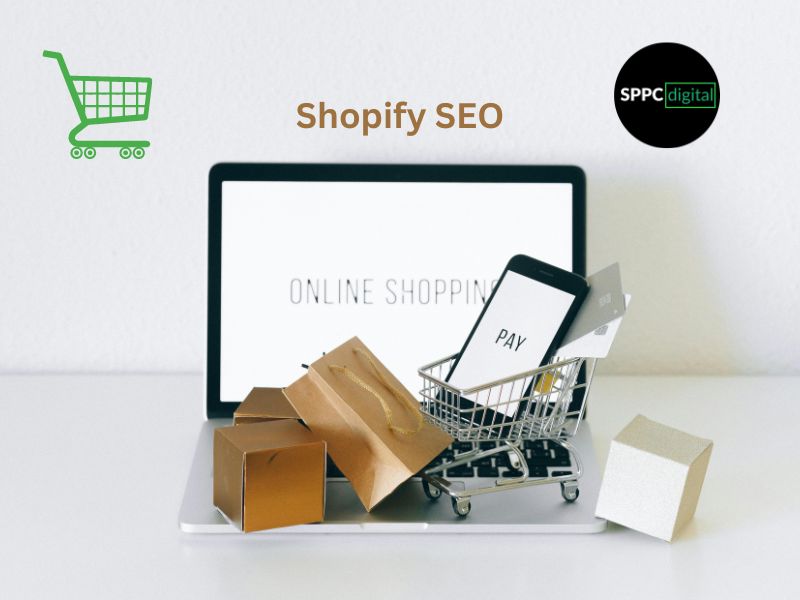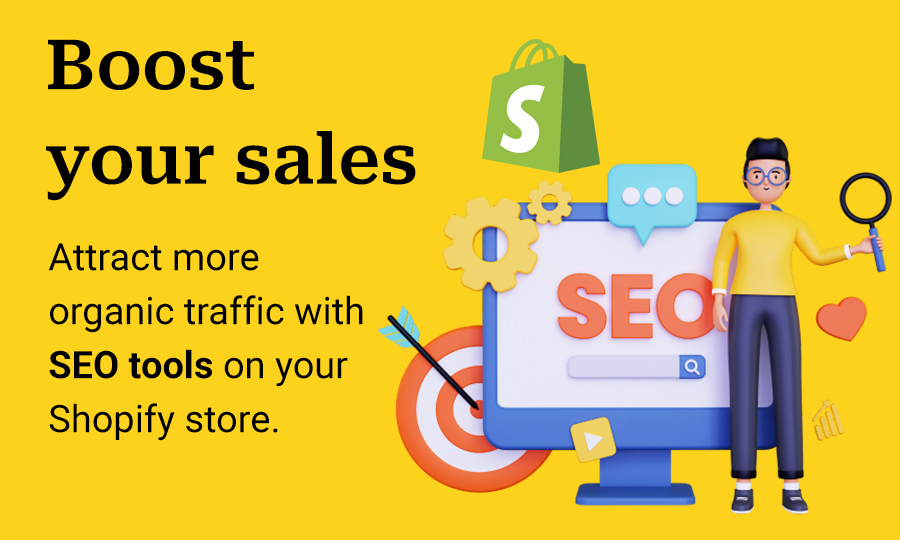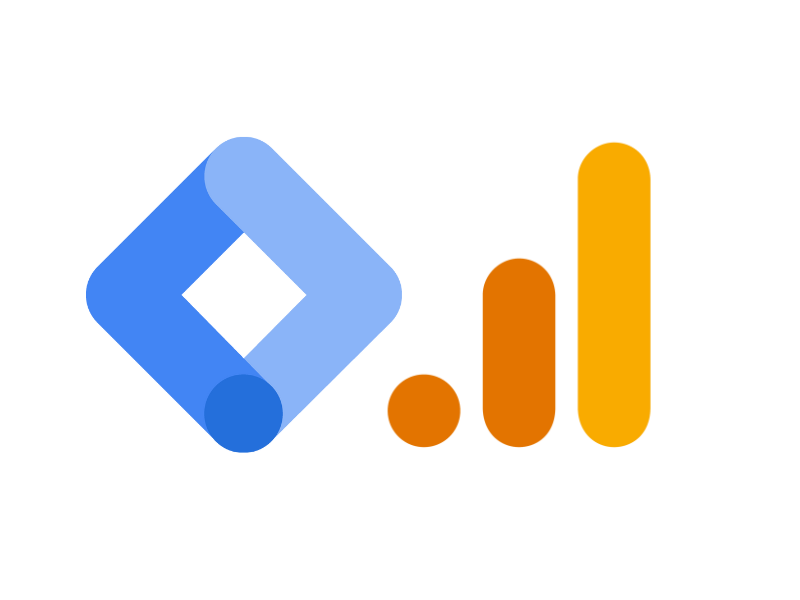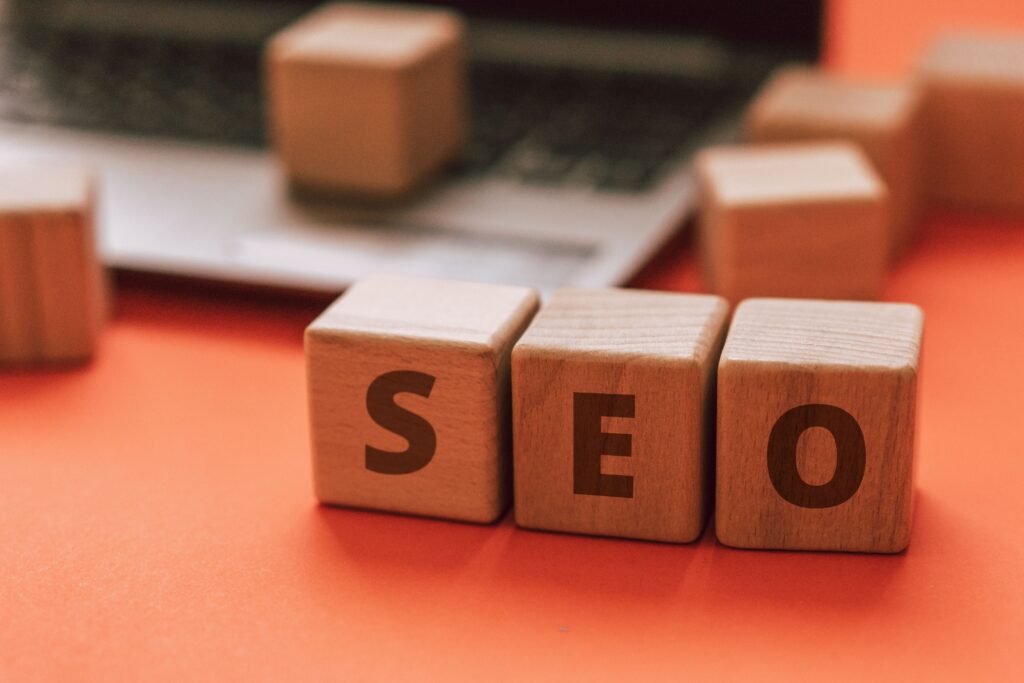Shopify SEO involves optimizing your online store for better search engine visibility. Key strategies include keyword research, on-page optimization, and quality backlinking.
Mastering SEO for your Shopify store is crucial to driving organic traffic and increasing sales. It’s not just about peppering your site with keywords; it’s about weaving them into high-quality content that resonates with both search engines and humans. Engaging product descriptions, compelling meta titles and descriptions, and optimization for mobile devices all contribute to a strong SEO foundation.
Your goal is to make every page of your Shopify store a beacon for potential customers. In doing so, you’ll help them find exactly what they need quickly and efficiently, which search engines like Google reward with higher rankings. By focusing on optimizing each aspect of your Shopify site, including its structure and content, you can create a user-friendly experience that also satisfies the technical requirements of SEO.

Credit: www.linkedin.com
The Importance Of SEO For Shopify Stores
The Importance of SEO for Shopify Stores cannot be overstated. In the digital marketplace, your store’s visibility is the lifeline to success. By harnessing the power of SEO, Shopify entrepreneurs can draw more traffic, ensuring their products shine in a crowded online bazaar.
Why SEO Is Crucial For Online Sales
SEO acts as a beacon, guiding potential customers to your Shopify store. A store optimized for search engines has a better chance of appearing at the top of search results. This heightened visibility means that:
- Brand awareness increases, placing your products in the spotlight.
- Quality traffic grows, bringing shoppers who are actively seeking what you offer.
- Conversion rates improve, converting more browsing into buying.
Without SEO, even the most exceptional Shopify store may languish unseen, its potential untapped.
The Impact Of Visibility On Revenue
Visibility is not just about being seen; it’s about being seen by the right people. For Shopify stores, this is where the magic happens:
| Increased Visibility | Revenue Impact |
|---|---|
| Top Search Engine Rankings | Directly correlates to higher sales by positioning your store in front of more eyes. |
| Targeted Keywords | Attracts shoppers ready to purchase, boosting your store’s earning potential. |
| Local SEO Strategies | Engages community shoppers, fostering both online and in-person sales growth. |
In essence, the more visible your Shopify store, the more revenue you’re likely to generate. SEO is the key to unlocking this potential.

Credit: www.linkedin.com
Getting Started With Shopify SEO
Welcome to the world of Shopify SEO! If you’re ready to bring more eyes to your online store, you’ve come to the right place. Setting up your Shopify store for search engine success is crucial for driving traffic and increasing sales. Let’s dive into the essentials of Shopify SEO and ensure your store is primed for top performance from day one.
Setting Up Your Store For SEO Success
Preparing your Shopify store for SEO involves a few key steps:
- Choose a responsive theme: This ensures your site looks great on all devices.
- Optimize site structure: A clear structure helps search engines understand your content.
- Use SSL encryption: This secures your site and improves trust with search engines.
Start by selecting a theme that adapts to various screens. Make your site easy to navigate by creating a logical menu. Also, having SSL encryption is non-negotiable for better SEO and customer trust.
Essential SEO Settings In Shopify
Shopify includes built-in SEO features that you must configure correctly. Cover these essential settings:
| Feature | Description | Action |
|---|---|---|
| Page Titles & Meta Descriptions | They tell search engines about your pages. | Customize them with relevant keywords. |
| ALT Tags | These tags describe your images to search engines. | Add descriptive ALT tags to all images. |
| URL Structure | Clean URLs help search engines crawl your site. | Ensure URLs are readable and not too lengthy. |
| Site Speed | Fast sites rank better and keep visitors happy. | Improve loading times by optimizing images and using fast themes. |
Make sure your page titles and descriptions include your target keywords. Use clear, descriptive ALT tags for images. Keep URLs short and sweet. Finally, aim for lightning-fast load times. Focus on these essentials, and you’ll build a strong foundation for your Shopify SEO.
Keyword Research For Your Shopify Store
Finding the perfect keywords for your Shopify store is like hunting for treasure. Keywords can boost your store’s visibility on search engines like Google. You need to uncover the words customers use when they’re searching for products like yours.
Tools For Finding The Right Keywords
Start your keyword quest by using the right tools. Tools guide you to the keywords your customers love. Here’s a list of tools to help you find those golden nuggets:
- Google Keyword Planner: A classic, free tool that serves up keyword ideas and traffic estimates.
- SEMrush: Provides an extensive list of keyword variations and insights into competitors’ strategies.
- Ahrefs: Discover keywords your competitors rank for and how hard it is to rank for them.
- Keyword Tool: Uses Google Autocomplete to generate long-tail keywords relevant to your products.
With these tools, you’ll identify keywords that align with your customers’ searches.
Integrating Keywords Into Your Shopify Site
After finding your keywords, it’s time to put them to work. Integrate them thoughtfully throughout your Shopify site. Here’s how:
| Shopify Element | Keyword Integration |
|---|---|
| Title Tags | Include primary keywords at the start of your page titles. |
| Meta Descriptions | Insert relevant keywords into your product and page descriptions. |
| Product Descriptions | Incorporate keywords naturally within your product descriptions. |
| ALT Text for Images | Add keywords to the ALT text to describe product images. |
| Blog Content | Create valuable content using keywords that relate to your products. |
| URLs | Use keywords in your URLs to enhance search relevance. |
Remember, using keywords is about balance. Avoid stuffing and keep it natural for the best SEO results.
On-page Optimization Techniques
Effective on-page SEO can skyrocket your Shopify store’s visibility. It’s all about fine-tuning every element on your site to speak Google’s language while providing a great user experience. Let’s dive into some essential tactics to maximize your store’s potential.
Creating Optimized Product Descriptions
Product descriptions are critical for both SEO and sales conversions. An optimized product description does dual duty: it helps your products rank higher on search engines and convinces customers to buy. Here’s how to craft them:
- Use relevant keywords strategically but avoid keyword stuffing.
- Make it informative and concise; provide value in each sentence.
- Include unique selling points to differentiate from competitors.
- Employ bullet points to make specs easy to scan.
Optimizing Images And Alt-text
Images enhance user experience, but they also need to be SEO-friendly to boost rankings. Here are the best practices to optimize your images:
- Compress images for quick loading times without losing quality.
- Choose the right file format; PNG for clarity, or JPEG for size.
- Use descriptive filenames; “red-dress.jpg” not “img001.jpg”.
- Add alt-text with keywords to describe images for search engines.
Technical SEO For Shopify
Technical SEO for Shopify is a crucial step for your online store’s visibility. It ensures search engines can find and rank your pages. We’ll dive into how to tackle crawl issues and boost your site’s speed and mobile-friendliness.
Fixing Common Crawl Issues
Shopify stores often face crawl issues. These problems can hide your site from search engines. Let’s look at how to find and fix them.
- Check your robots.txt file. This file tells search engines what to crawl. Make sure it’s not blocking important pages.
- Fix broken links. Use tools like Google Search Console to find and fix them.
- Remove duplicate content. Use canonical tags to point search engines to the original page.
Improving Site Speed And Mobile-friendliness
A fast, mobile-friendly site is key for SEO. Customers love quick-loading pages that work on their phones. Here’s how to speed up your store and make it mobile-friendly.
| Task | Action |
|---|---|
| Compress images | Use Shopify’s built-in tools or apps to reduce file sizes without losing quality. |
| Optimize code | Clean up any unnecessary code or use apps for automatic code optimization. |
| Test mobile-friendliness | Use Google’s Mobile-Friendly Test tool to check how your site looks on phones. |
By following these steps, your Shopify store will be in better shape for both customers and search engines. Your site’s visibility and user experience depend on a solid technical SEO foundation.

Credit: ecomposer.io
Content Marketing And SEO
Shopify SEO is a powerful tool for online stores.
It helps your store show up on Google more easily.
Content marketing is a smart way to use SEO.
You share useful stuff that customers want to read.
This makes your Shopify store more popular on the internet.
Building A Blog On Shopify
Starting a blog on your Shopify store is easy.
Go to your Shopify admin area.
Click on “Blog Posts” and start writing.
Share stories about your products.
Give tips and tricks that can help customers.
This makes your store a fun place to visit.
Blogs are also good for SEO.
They can help Google see your store as an expert.
- Use keywords that people search for.
- Write about topics customers care about.
- Keep your blog fun to read and useful.
Leveraging Content For Backlinks
Backlinks are like votes for your website.
They tell Google that other sites think you’re great.
Use your blog posts to get these votes.
- Write amazing content others want to share.
- Reach out to blogs that talk about your stuff.
- Ask them to link back to your blog.
Remember, quality beats quantity.
A few good links can do more than many bad ones.
Measuring And Adjusting Your SEO Strategy
Measuring and Adjusting Your SEO Strategy is critical for online success with Shopify. Understand how to gauge the effectiveness of your SEO efforts. Learn when to stick to the plan and when to call for a change. Concrete data from analytics guides these decisions, making your strategy dynamic and results-driven.
Using Analytics To Track SEO Performance
Tracking your SEO performance is like navigating a ship through the ocean; analytics provide the compass and map. Use tools like Google Analytics to monitor:
- User engagement: time on site and pages per session.
- Traffic sources: uncover where visitors come from.
- Keyword rankings: see which keywords drive traffic.
- Conversion rates: know which pages turn visitors into customers.
Regularly checking these metrics will highlight your SEO victories and show where to improve.
When To Pivot Your SEO Approach
SEO isn’t set-it-and-forget-it. It needs regular tweaks. Know when to pivot:
- When traffic plateaus or declines, look for new keywords.
- Low conversion rates? Re-evaluate your landing pages.
- If users leave quickly, improve page content or usability.
- Adapt to algorithm changes promptly to stay ahead.
Embrace change in your SEO journey and adjust strategies for continued growth.
Frequently Asked Questions On Shopify SEO
Can You Do SEO With Shopify?
Yes, you can do SEO with Shopify. The platform offers built-in tools to help optimize your store, such as editable meta tags, alt tags, and customizable URLs.
Which Is The Best SEO Agency For Shopify?
Identifying the best SEO agency for Shopify depends on your specific needs and budget. Research and compare top-performing agencies like OuterBox, WebFX, and Boostability for tailored Shopify SEO strategies.
How Do I Check My SEO On Shopify?
To check your SEO on Shopify, use the built-in analytics tools or install SEO-specific apps from the Shopify App Store. Regularly review your site’s SEO health using these resources.
Is Shopify Blog SEO Friendly?
Yes, Shopify blogs are SEO-friendly. They offer built-in features to optimize content, such as customizable titles and meta descriptions.
How Does Shopify SEO Improve Sales?
Shopify SEO optimizes your store for search engines, leading to higher visibility, more traffic, and potentially increased sales as your products are discovered by more shoppers online.
Conclusion
Mastering Shopify SEO is essential for e-commerce success. By leveraging the tips we’ve explored, your online store can climb the search rankings. Remember, SEO is a continuous journey; stay updated and adaptable. Start optimizing now, and watch your Shopify store flourish in the digital marketplace.




